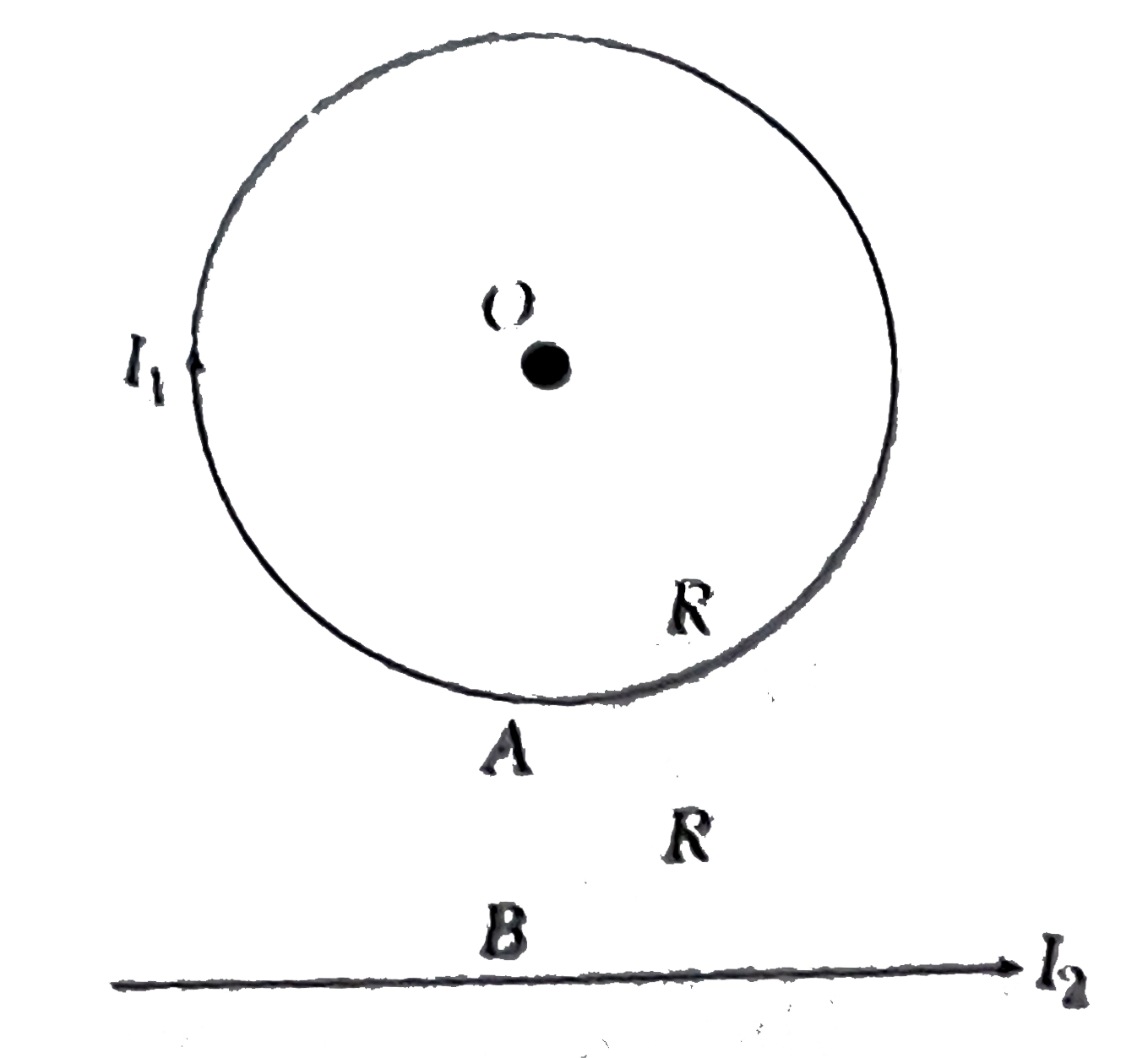(A): An induced current develop in a conductor moved in a direction parallel to the magnetic field. (R): An induced current is developed when the number of magnetic lines of force associated with conductor is changed.
Both .A. and .R. are true and .R. is the correct explanation of .A.
Both .A. and .R. are true and .R. is not the correct explanation of .A.
.A. is true and .R. is false
.A. is false and .R. is true
The correct Answer is:D
To solve the question, we need to analyze both the assertion (A) and the reason (R) given in the problem.
Step 1: Analyze the Assertion (A)
The assertion states: "An induced current develops in a conductor moved in a direction parallel to the magnetic field."
- When a conductor moves in a magnetic field, an induced current is generated if there is a change in magnetic flux through the conductor.
- If the conductor moves parallel to the magnetic field lines, there is no change in the magnetic flux linked with the conductor. This is because the angle between the magnetic field and the area vector of the conductor remains constant.
- Therefore, no induced current is generated when the conductor moves parallel to the magnetic field.
Conclusion for Assertion (A): The assertion is false.
Step 2: Analyze the Reason (R)
The reason states: "An induced current is developed when the number of magnetic lines of force associated with the conductor is changed."
- This statement is true. According to Faraday's law of electromagnetic induction, an induced current is produced when there is a change in magnetic flux through the conductor.
- The magnetic flux is proportional to the number of magnetic lines of force passing through the area of the conductor. If the number of lines of force changes, the magnetic flux changes, leading to the generation of an induced current.
Conclusion for Reason (R): The reason is true.
Step 3: Determine the Relationship Between A and R
- The assertion is false, while the reason is true.
- The reason does not explain the assertion because the assertion itself is incorrect.
Final Conclusion
- Assertion (A) is false.
- Reason (R) is true.
- Therefore, the correct answer is that the assertion is false, and the reason is true.
The assertion states: "An induced current develops in a conductor moved in a direction parallel to the magnetic field."
- If the conductor moves parallel to the magnetic field lines, there is no change in the magnetic flux linked with the conductor. This is because the angle between the magnetic field and the area vector of the conductor remains constant.
- Therefore, no induced current is generated when the conductor moves parallel to the magnetic field.
The reason states: "An induced current is developed when the number of magnetic lines of force associated with the conductor is changed."
- The magnetic flux is proportional to the number of magnetic lines of force passing through the area of the conductor. If the number of lines of force changes, the magnetic flux changes, leading to the generation of an induced current.
- The assertion is false, while the reason is true.
- The reason does not explain the assertion because the assertion itself is incorrect.
- Assertion (A) is false.
- Reason (R) is true.
- Therefore, the correct answer is that the assertion is false, and the reason is true.
Topper's Solved these Questions
- ELECTROMAGNETIC INDUCTIONBOOK - AAKASH SERIESCHAPTER - ELECTROMAGNETIC INDUCTIONEXERCISE - EXERCISE - II (MAGNETIC FLUX, FARADAY.S LAW, LENZ.S LAW , AC GENERATOR)
10 Videos
- ELECTROMAGNETIC INDUCTIONBOOK - AAKASH SERIESCHAPTER - ELECTROMAGNETIC INDUCTIONEXERCISE - EXERCISE - II (MOTIONAL EMF)
3 Videos
- ELECTROMAGNETIC INDUCTIONBOOK - AAKASH SERIESCHAPTER - ELECTROMAGNETIC INDUCTIONEXERCISE - EXERCISE - I (SELF AND MUTUAL INDUCTION)
16 Videos
- ELECTRIC FIELD AND POTENTIALBOOK - AAKASH SERIESCHAPTER - ELECTRIC FIELD AND POTENTIALEXERCISE - PROBLEMS (LEVEL-II)
26 Videos
- ELECTROMAGNETIC WAVESBOOK - AAKASH SERIESCHAPTER - ELECTROMAGNETIC WAVESEXERCISE - EXERCISE -II
22 Videos
Similar Questions
Knowledge Check
A conductor is moving with the velocity v in the magnetic field and induced current is I. If the velocity of conductor becomes double, the induced current will be
A0.5 IB1.5 IC2 ID2.5 IWhat rule do we use to find the direction of induced current in a conductor moving in a magnetic field?
AFleming's left hand ruleBFleming's right hand ruleCAmpere's ruleDRight hand clasp rule
Magnetic lines of force due to a straight conductor carrying current are
View Solution(A) : Free electrons always keep on moving in a conductor even then no magnetic force act on them in magnetic field unless a current is passed through it.
(R) : The average velocity of free electron in a conductor is zero in the absence of the electric field in it.
View SolutionAs shown in diagram, a current carrying conductor is subjected to steady uniform magnetic field. Then

View SolutionThe magnetic field in a straight current carrying conductor wire is:
View SolutionIn the diagram I1,I2 are the strength of the currents in the loop and straight conductors respectively OA=AB=R. the net magnetic field at the centre O is zero . Then the ratio of the currents in the loop and the straight conductor is

View SolutionShown in the figure is a conductor carrying a current i. the magnetic field at the origin is :

View Solution
